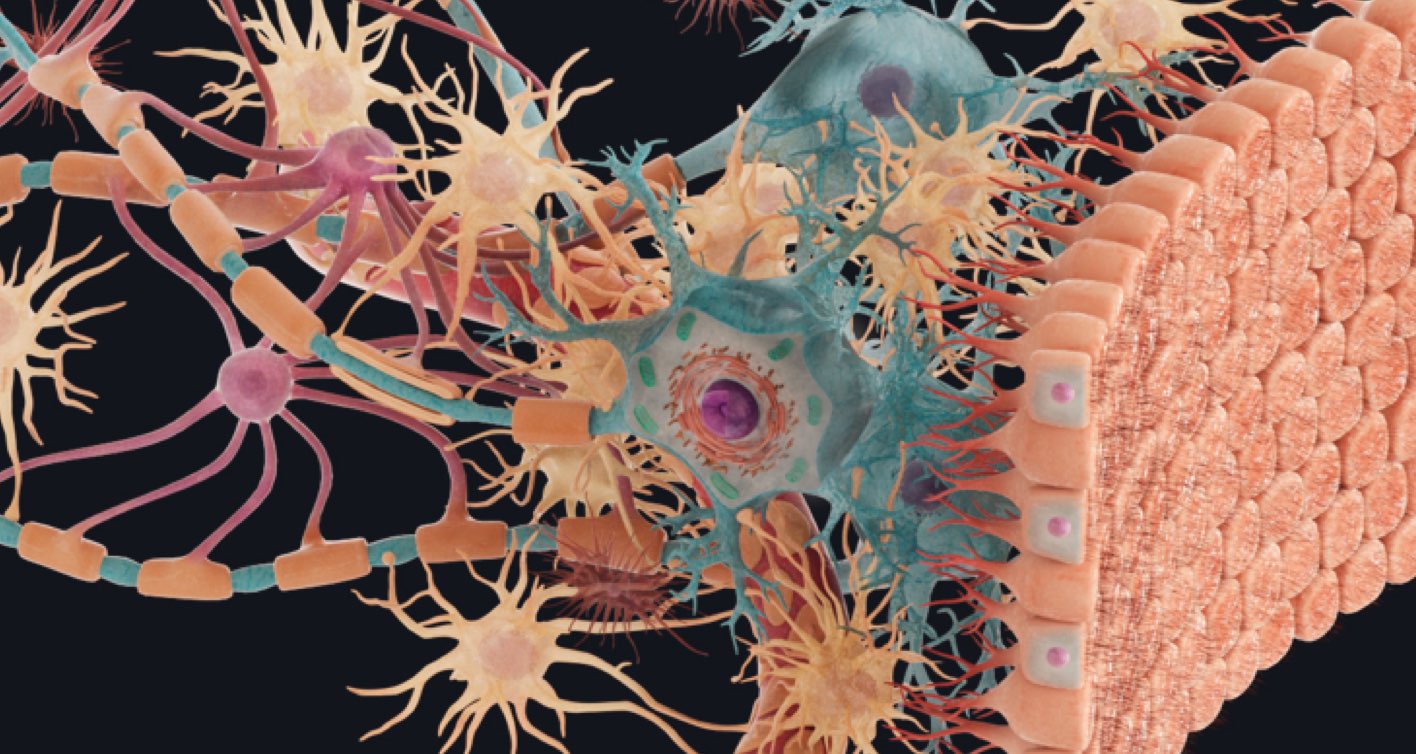
We’ve lots of good things in store for 2021, including an all-new region for our Radiology library and 2 new detailed models. Let’s take a look at the Cells of Nervous Tissue model that’s landing on our platform in January ?.
Neurons of the central nervous system (CNS) are supported by different non-excitable cells collectively referred to as neuroglia. There are four main types of neuroglial cell present in the CNS: 1.) astrocytes; 2.) oligodendrocytes; 3.) microglia and 4.) ependymal cells.
1.) Astrocyte
Astrocytes are the largest type of neuroglial cell. They exhibit multiple processes that can form foot-like end feet which cover large areas of blood vessels or the bare areas of myelinated axons i.e. the nodes of Ranvier. Astrocytes provide metabolic support to neurons of the CNS by facilitating removal of waste from these neurons. They also maintain the blood-brain barrier by surrounding endothelial cells.
2.) Oligodendrocyte
Oligodendrocytes are the most abundant neuroglia in the CNS. Myelinating processes arise from the oligodendrocyte surface membrane and can wrap around the axons of multiple neurons. These processes form myelin sheaths in the white matter. Oligodendrocytes are smaller than astrocytes and exhibit fewer processes.
3.) Microglial cell
Microglia represent the smallest and least abundant cell type of the CNS neuroglia. Microglia in a healthy CNS are inactive bystanders and are known as resting microglial cells. When traumatic or ischemic injury occurs in the brain and spinal cord, microglia are activated and become immune effector cells. For example, when the myelin sheath degenerates in neurodegenerative diseases, microglia remove the degenerated myelin sheath.
4.) Ependymal cell
Ependymal cells are epithelial-like neuroglia that line the ventricles of the brain and the central canal of the spinal cord. The apical surface of each ependymal cell is covered by around 20 cilia and other short microvilli. On the opposite end of the cell, tentacle-like processes from the basal surface of the ependymal cell interact with the processes of astrocytes.
Get ready to explore the details of the Cells of Nervous Tissue, in addition to the Synapse, both landing on the platform in January 2021.
